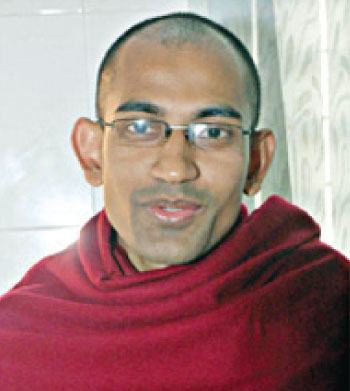by Pragyananda Bhikkhu
Translated by Rahnuma Ahmed
Translator’s note: Young Bangladeshi Buddhist monk Pragyananda Bhikkhu, of Ramu Shima Bihar, wrote “Ramu Shohingshota: Fanoosh kono balloon noy”, which was published in Dainik Cox?s Bazar, November 4, 2012 in light of the controversy created over setting afloat fanooshes as part of the celebration of Prabarana Purnima, the second largest Buddhist religious festival; to be noted, this year’s date coincided with the monthly anniversary of the communal attacks ?of September 29, 2012, which destroyed innumerable Buddhist monasteries, temples and homes, allegedly caused by an offensive photograph discovered in the facebook account of Uttam Kumar Barua, a Bengali Buddhist youth, several hours before the attacks occurred. According to press reports, the attacks were visibly incited by local leaders and members of the ruling Awami League (AL), the opposition Bangladesh Nationalist Party (BNP) and the Jamaat-e-Islami; the attackers included those belonging to these political parties, and also, other Muslims, both local inhabitants and outsiders. News reports have highlighted the “inaction” of police officials and the local-level administration. Both ruling AL and the opposition BNP agree that these attacks were “planned” and pre-meditated.
The fanoosh controversy, as Pragyananda clearly explains, was the result of administrative interference in religious ceremonies and rituals; the Buddhists of Ramu had decided not to? observe their rites of virtue this year as they were “heartbroken” and grieving over their losses.
Relief and rehabilitation (tran) actions taken by the government are satisfactory, but ones concerned with deliverance (poritran) are not, writes Pragynanda, since the issue of delivering justice to Buddhists in Ramu has by all accounts become “mired in the quicksand of [party] politics.”
After reading his article, I had requested Pragyananda to elaborate on several things including worship rites regarding fanoosh, he responded to my request in writing, sections of which have been incorporated in this translation. — Rahnuma Ahmed?

ACCORDING TO some, a fanoosh is a light, its resemblance to a dole has led some to call it a dolebaji (large bin for storing rice). But in Buddhist vocabulary, a fanoosh is known as a sky light. Prince Siddartha (later Gautam Buddha) renounced kingdom, kingship, greed, a life of luxury and riches in his quest for freedom from suffering; he left his sangsar on a blessed day in the month of Ashar when it was full moon [purnima]. Continue reading “Ramu violence: A fanoosh is not a balloon”
